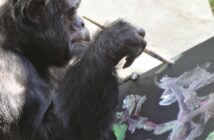According to the National Park Service website, “The centennial will kick off a second century of stewardship of America’s national parks and engaging communities through recreation, conservation, and historic preservation programs.”
There is nothing so American as our national parks…. The fundamental idea behind the parks… is that the country belongs to the people, that it is in process of making for the enrichment of the lives of all of us.
~ President Franklin Delano Roosevelt
The National Park Service is responsible for 410 areas, from monuments to battlefields to parks and the White House. They are the stewards of 84 million acres throughout every state, the District of Columbia, Samoa, Guam, Puerto Rico and the Virgin Islands. This responsibility is maintained, interpreted and preserved by 20,000 permanent, temporary and seasonal employees and 221,000 volunteers. Total recreation visitors to national parks in 2015 were 307,247,252.
In Florida we enjoy a number of National Park areas and monuments, including: Big Cypress National Preserve; Biscayne, Everglades, and Dry Tortugas National Parks (with Fort Jefferson); Canaveral and Gulf Islands National Seashores; Castillo de San Marcos and Fort Matanzas National Monuments; and De Soto and Fort Caroline National Memorials and the Gullah/Geechee Cultural Heritage Corridor.
In the Beginning Was the West
Americans developed a national pride of the natural wonders in this nation and they believed that they rivaled the great castles and cathedrals of Europe.
~ David Barna, National Park Service Chief of Public Affairs
America’s westward expansion in the nineteenth century brought with it explorers who surveyed, sketched, photographed and wrote about the natural wonders they encountered in places such as Yellowstone and Yosemite. The Hayden Geological Survey of 1871 exploring the region of northwestern Wyoming was led by geologist Ferdinand Vandeveer Hayden (1829-1887). Although Hayden had previously explored the area, the 1871 expedition was the first federally funded geological survey to explore and document the area that would later become Yellowstone National Park. The findings of the expedition were largely responsible for convincing the U.S. Congress to pass the legislation creating America’s first national park in 1872.
Joe & Jose Clark, Hayden Expedition. Photographer: William H Jackson; 1871Art and science combined to sway Congress to set aside public lands and to remove them from future development and despoliation. Accompanying the expedition were landscape painter Thomas Moran (1837-1926) and photographer William Henry Jackson (1843-1942). Their depictions of the majestic mountains and waterfalls, as well as oddities such as geysers and hot bubbling mud pits illustrated the beauty and rarity of the region.
Photographing in High Places; William H Jackson; 1871Other voices brought awareness of the West’s unique physical grandeur to the attention of politicians and the nation in general. Albert Bierstadt’s (1830-1902) highly-romanticized and luminous paintings of Yosemite and the writings of dedicated naturalists such as John Muir (1838-1914) helped to establish and enlarge what would later become the National Park System in 1915. At a time when much of the West was being settled and developed by private interests, the federal government had the foresight to dedicate and protect land for the public.
The Yellowstone Range from near Fort Ellis Watercolor by Thomas Moran, July 12, 1871Setting aside large parcels of land for the public to experience the treasures of the native environment and to preserve it for future generations was unheard of in Europe, where preserves were usually the privilege of royalty and the wealthy. Scottish-born John Muir favored the preservation of the Western forests. Co-founder of the Sierra Club, Muir was a naturalist, farmer, inventor, sheepherder, explorer, author, conservationist and environmental philosopher. He was one of the most influential champions for public lands, petitioning Congress along with editor Robert Underwood Johnson for the National Park bill to establish Yosemite National Park in 1890. Referred to as the “Father of the National Parks,” Muir’s writings about the spiritual qualities of nature influenced politicians and the general public in the cause of land conservation. Muir was also involved in the creation of Sequoia, Mount Rainier, Petrified Forest, and Grand Canyon national parks.
John Muir (left) is joined by President Theodore Roosevelt on Overhanging Rock, Yellowstone National Park, March, 1903.Before making Yosemite a national park, President Lincoln placed the area under the protection of California during the Civil War. In 1872, President Ulysses S. Grant made Yellowstone a national park, with more parks and cultural sites following.
In 1903, President Theodore Roosevelt and John Muir were brought together by the publication of Muir’s book, Our National Park for the purpose of developing the foundation for Roosevelt’s conservation programs. One of the park system’s greatest champions, President Roosevelt established five new parks, 18 national monuments, four game refuges,
51 bird sanctuaries, and over 100 million acres of national forest between 1901 and 1909.
Need for Control
It is the will of the nation as embodied in the act of Congress [in setting aside the Yosemite government reservation in 1864]that this scenery shall never be private property, but that like certain defensive points upon our coast it shall be solely
for public purposes.
A more important class of considerations, however, remains to be stated…It is the main duty of government, if it is not the sole duty of government, to provide means of protection for all its citizens in the pursuit of happiness against all the obstacles, otherwise insurmountable, which the selfishness of individuals or combinations of individuals is liable to interpose to that pursuit.
~ Frederick Law Olmsted, 1865
The existing parks, monuments, forests and sanctuaries were without protection and funding. They lacked a central organization to manage them. Private interests focused on reaping profits from the exploitation of the natural resources present in the parks began to have a serious impact on the public lands. The highly successful tourism trade, complete with rampant “souvenir” hunters camping in sites such as Yellowstone and Yosemite, added to the despoliation of the parks. Sightseers were literally loving the parks to death. If things were to continue this way, the parks would eventually be destroyed.
Stephen T. MatherBirth of the National Park Service
The siren song of making money from public lands would be silenced by one of profit’s own millionaire industrialists. In 1915, industrialist Stephen T. Mather (1867-1930) started a crusade to establish a National Park Service that would have preservation as its focus. He gained support from leaders in industry, schoolchildren, newspapers, and the National Geographic Society with the help of his friend and journalist Robert Sterling Yard. Their successful publicity campaign promoted the creation of a federal agency to oversee the administration of the national parks. The National Park Service was created in 1916 under the Department of the Interior. Mather was appointed the first director of the NPS, serving until 1929 and adding new parks and professional oversight of the parks.
Who will gainsay that the parks contain the highest potentialities of national pride, national contentment, and national health? A visit inspires love of country; begets contentment; engenders pride of possession; contains the antidote for national restlessness…. He is a better citizen with a keener appreciation of the privilege of living here who has toured the national parks.
~Stephen T. Mather
Today’s National Park Service Florida Sites
The National Park Service grew over the decades, adding and designating a variety of parks, monuments, memorials and national seashore sites around the U.S. and the District of Columbia, Samoa, Guam, Puerto Rico and the Virgin Islands. In the state of Florida, NPS sites range from the largest park covered by water, Biscayne, to the only extant 17th century military construction in the country and the oldest masonry fortress in the U.S., the Castillo de San Marcos. Cultural resources managed by the NPS include historic European and American fortifications, memorials, and repositories of archival and artefactual materials that are relevant to those sites. In addition to caring for natural resources, the NPS provides outdoor recreational facilities, educational programs and information about preservation standards, and public events.
Fort Caroline at the Preserve was the site of the first contact between the Timucua-speaking peoples and the French explorer Jean Ribault in 1562. René Goulaine de Laudonnière, Ribault’s second-in-command on the 1562 expedition, led 200 new settlers back to Florida where they founded the hapless Fort Caroline settlement at the mouth of the St. John’s River in 1564.
Another cultural resource located at the Preserve is the Kingsley Plantation, a large operation that produced Sea Isle cotton, sugarcane, citrus and corn with the labor of enslaved Africans. Zephaniah Kingsley moved to Fort George Island with his wife, Anna Madgigine Jai who was from Senegal, West Africa, and their three children. Anna, an enslaved woman, was freed by her husband in 1811. She purchased land and slaves upon her freedom and participated in plantation management.
Timucuan Indians Planting MaizeThe fortifications in St. Augustine and 15 miles south of the city on the Matanzas River are unlike any other masonry defensive structures in world. Built of coquina, a limestone, shell-based rock, the Castillo de San Marcos (1695) and Fort Matanzas (1740), are buildings that could withstand the shock and potential destruction caused by cannonballs because the soft material would absorb them instead of being shattered like other kinds of rock or masonry. The preservation and interpretation of the history and the cultural influences of those associated with the Castillo include Native Americans, Spanish, colonial African-Americans, English, Minorcan, and American.
The DeSoto Memorial in Bradenton commemorates Hernando De Soto’s landing at Tampa Bay in 1539. The park located on the south shore of the Manatee River at the mouth of Tampa Bay has four distinct natural ecosystems along its half mile nature trail. After fierce resistance from the indigenous peoples, De Soto set off for his four-year exploration of the interior, making him the first European to see the Mississippi River.
Gullah Geechee MapThe Gullah/Geechee Cultural Heritage Corridor extends from Wilmington, North Carolina, to Jacksonville, Florida. The park explores of one of our country’s unique cultures of captive Africans brought to the southern U.S. from West Africa and the history of their descendants.
Two areas managed by the NPS are National Seashore sites, Canaveral in Titusville and New Smyrna Beach, and the Gulf Islands in Gulf Breeze, Florida and Ocean Springs, Mississippi. Canaveral is a barrier island that includes a wooded trail for exploring and relaxing. The Gulf Islands of the northern Gulf of Mexico boast white sandy beaches, clear blue waters, camping, boating and fishing.
Our National Parks are our country’s glory, and they belong to us.
It [National Park] stands as a collective memory of where we have been, what sacrifices we have made to get here, and who we mean to be. By investing in the preservation, interpretation, and restoration of these symbolic places, we offer hope and optimism to each generation of Americans.”
~ David Barna, National Park Service Chief of Public Affairs
Article mages
sourced from NPS.org
In the upcoming issues of SOMI Magazine we will explore the National Parks located in South Florida: the beauty of Biscayne Bay, the ever-fascinating Everglades, the majesty of the Big Cypress Preserve, and the lure of the Dry Tortugas with historic Fort Jefferson will be examined in depth and with Paul Marcellini’s stunning photography.



